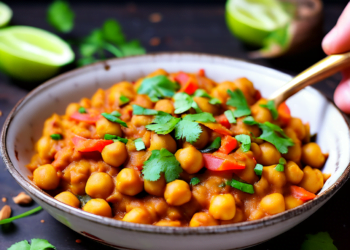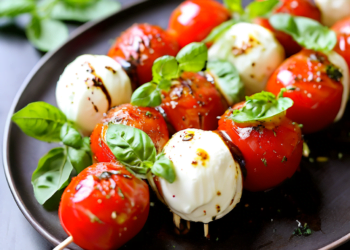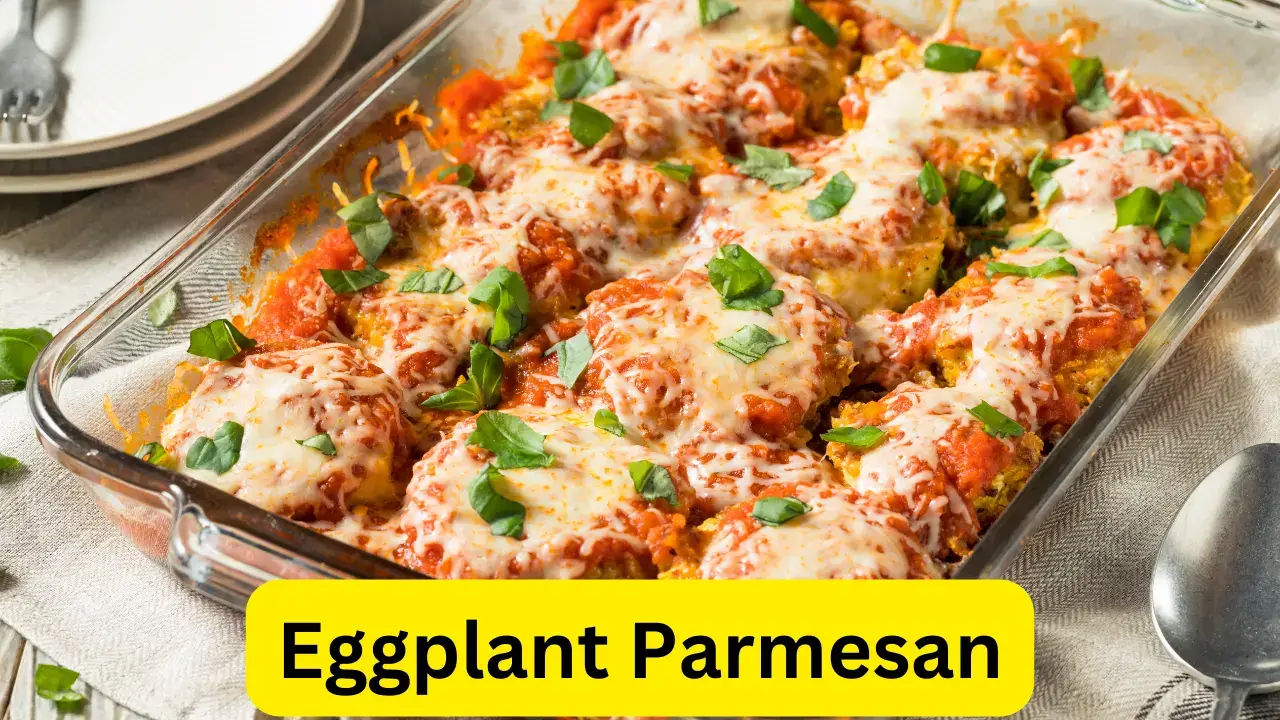In the world of healthy and delicious alternatives to traditional pasta, spaghetti squash has gained quite a following. This vibrant and versatile vegetable is visually appealing and offers a unique texture and a mild, slightly sweet flavor that pairs perfectly with various dishes.
For vegetarians and those looking to incorporate more plant-based options into their diet, spaghetti squash is a beautiful substitute for noodles in popular dishes like pad Thai. By replacing traditional rice noodles with spaghetti squash, you can enjoy a flavorful and satisfying vegetarian pad Thai that is lower in carbohydrates and packed with nutrients.
Nutritional Benefits of Spaghetti Squash
Regarding healthy alternatives to traditional pasta, spaghetti squash takes the spotlight. Not only does it provide a satisfying noodle-like texture, but it also offers numerous nutritional benefits. Incorporating spaghetti squash into your meals can promote a well-balanced and nutritious diet.
Low in Calories and Carbohydrates
Spaghetti squash is an excellent choice for those looking to reduce their calorie and carbohydrate intake without sacrificing taste. Compared to traditional pasta, which can be high in calories and carbs, spaghetti squash offers a significantly lighter option.
According to the United States Department of Agriculture (USDA) National Nutrient Database, one cup of cooked spaghetti squash contains approximately:
- 42 calories
- 10 grams of carbohydrates
This makes it an excellent choice for individuals watching their calorie or carb intake, whether for weight management or dietary reasons.
Rich in Vitamins and Minerals
Spaghetti squash is low in calories and carbs but packed with essential vitamins and minerals. These nutrients play a crucial role in supporting overall health and well-being.
Here are some essential vitamins and minerals found in spaghetti squash:
Vitamins | Minerals |
|
|
These vitamins and minerals contribute to various bodily functions, such as supporting a healthy immune system, promoting bone health, and aiding in energy production.
Incorporating spaghetti squash into your meals can provide a nutritious boost while still enjoying a delicious dish. Whether you want to lose weight, maintain a healthy lifestyle, or enjoy a flavorful meal, this versatile vegetable has covered you.
A Comparison of Traditional and Spaghetti Squash Pad Thai
The traditional version of Pad Thai is a beloved staple in Thai cuisine. However, spaghetti squash Pad Thai is gaining popularity for those with dietary restrictions or those looking for a healthier alternative. This unique twist on the classic dish reduces the carb content and eliminates gluten, making it suitable for those following a low-carb or gluten-free diet.
Ingredients Comparison
To truly understand the contrast between traditional and spaghetti squash Pad Thai, let’s take a closer look at their key ingredients and nutritional differences:
Ingredients | Traditional Pad Thai | Spaghetti Squash Pad Thai |
Rice Noodles | High in carbohydrates | Replaced with spaghetti squash strands, significantly reducing carbs |
Tamarind Sauce | Contains sugar | Can be made using alternative sweeteners |
Peanuts | High in fat and calories | Can be used in moderation for added texture and flavor |
Eggs and Protein | Usually cooked with eggs and may include shrimp, chicken, or tofu | Can still be prepared with eggs and topped with desired protein |
By replacing conventional rice noodles with spaghetti squash and making some ingredient modifications, Spaghetti Squash Pad Thai offers a lower-carb and gluten-free alternative without compromising flavor.
Step-by-Step Guide to Preparing Spaghetti Squash
Preparing spaghetti squash is a simple and enjoyable process that unlocks its delicious potential as a healthy alternative to pasta. Whether you’re a seasoned chef or a novice in the kitchen, follow this step-by-step guide to create mouthwatering dishes featuring spaghetti squash.
- Cutting the squash: Begin by cutting the spaghetti squash in half lengthwise. Use a sharp knife and steady hands to ensure a clean cut.
- Scooping out the seeds: Once the squash is halved, use a spoon to scrape the seeds and stringy pulp from the center. Discard the seeds or roast them as a nutritious snack.
- Cooking methods: There are various cooking methods to cook spaghetti squash. Choose your preferred method based on time and convenience:
Cooking Method | Time | Description |
Roasting | Approximately 40-45 minutes | Coat the inside of each squash half with olive oil, salt, and pepper. Place the halves cut side down on a baking sheet and bake in a preheated oven at 400°F (200°C) until the flesh easily separates into strands. |
Microwaving | Approximately 10-12 minutes | Place each squash half cut side down in a microwave-safe dish with a little water. Cover with a microwave-safe lid or plastic wrap and microwave on high until the flesh is tender and separates easily with a fork. |
Boiling | Approximately 20-25 minutes | Bring a large pot of water to a boil. Add the squash halves and cook until the flesh is tender, easily separating into strands. |
Regardless of your chosen cooking method, it’s essential to ensure that the flesh of the spaghetti squash is cooked until it reaches a tender consistency.
Once the spaghetti squash is cooked, use a fork to scrape the flesh lengthwise, separating it into spaghetti-like strands. These strands can be used as a base for various delicious recipes, such as the veggie-packed spaghetti squash pad Thai.
Recipe Example:
“Spaghetti Squash Pad Thai”
Ingredients:
- 1 cooked spaghetti squash
- Two tablespoons of vegetable oil
- One small onion, thinly sliced
- Two cloves garlic, minced
- One small red bell pepper, thinly sliced
- 1 small carrot, julienne
- 1 cup bean sprouts
- Three tablespoons soy sauce
- Two tablespoons of lime juice
- One tablespoon of brown sugar
- One tablespoon fish sauce (optional for vegetarians)
- Chopped peanuts, lime wedges, and cilantro for garnish
Instructions:
1. Heat vegetable oil in a large skillet. Add onion and garlic, and sauté until fragrant.
2. Add bell pepper and carrot, and cook until vegetables are tender-crisp.
3. Stir in the cooked spaghetti squash and bean sprouts.
4. In a small bowl, whisk together soy sauce, lime juice, brown sugar, and fish sauce (if using). Pour the mixture over the squash and vegetables.
5. Cook for 2-3 minutes, stirring well to coat the ingredients evenly.
6. Remove from heat and garnish with chopped peanuts, lime wedges, and cilantro.
7. Serve hot and enjoy!
This easy spaghetti squash pad Thai is a perfect example of how versatile and delicious this healthy vegetable can be. Get creative and explore other variations using the step-by-step guide above as your starting point.
Infusing Thai Flavors into Spaghetti Squash Pad Thai
To create a delicious pad Thai alternative with a Thai-inspired twist, utilize the unique flavors of spaghetti squash as the base. By infusing the dish with authentic Thai ingredients, you can elevate the taste while maintaining the health benefits of this nutritious recipe. Key ingredients to include are fish sauce, tamarind paste, lime, and cilantro, essential for achieving the distinct flavors of traditional pad Thai. Combining savory, tangy, and citrusy notes adds depth to the dish, creating a satisfying and flavorful meal.
Tip: Adjust the flavors according to personal preferences. Add more lime juice for a tangier taste, increase the amount of fish sauce for a saltier profile, or incorporate chili peppers for a spicier kick.
“The infusion of Thai flavors brings a delicious twist to spaghetti squash pad Thai, offering an exciting alternative for those seeking a healthier yet flavorful meal option.”
Thai-inspired Spaghetti Squash Pad Thai Recipe:
Ingredients | Quantity |
Spaghetti squash | 1 medium-sized |
Tofu or shrimp | 1 cup |
Bean sprouts | 1 cup |
Eggs | 2 |
Garlic, minced | 3 cloves |
Green onions, chopped | 1/4 cup |
Cilantro leaves, chopped | 1/4 cup |
Peanuts, crushed | 1/4 cup |
Lime wedges | For serving |
Instructions:
- Preheat the oven to 400°F (200°C). Cut the spaghetti squash in half lengthwise and scoop out the seeds.
- Place the squash halves cut side down on a baking sheet lined with parchment paper. Bake for 40-45 minutes or until the flesh is tender.
- While the spaghetti squash is baking, prepare the sauce by combining fish sauce, tamarind paste, lime juice, and a touch of honey or brown sugar for sweetness.
- In a large pan or wok, heat some oil over medium-high heat. Add the minced garlic and cook until fragrant.
- Add the tofu or shrimp to the pan and cook until it becomes slightly crispy or the shrimp turns pink.
- Push the tofu or shrimp to the side of the pan and crack the eggs into the space. Scramble the eggs until cooked.
- Use a fork to scrape the cooked flesh of the spaghetti squash into the pan. Stir well to combine the ingredients.
- Pour the sauce over the mixture and stir to coat everything evenly.
- Add the bean sprouts and green onions, stirring them in gently to maintain some crunch.
- Remove from heat and garnish with chopped cilantro and crushed peanuts.
- Serve the Thai-inspired spaghetti squash pad Thai hot with lime wedges on the side for an extra burst of tanginess.
Exploring Variations of Spaghetti Squash Pad Thai
Spaghetti squash pad Thai is a versatile dish easily customized to suit different dietary preferences and restrictions. By incorporating additional vegetables, tofu, or alternative protein sources, you can create a delicious and satisfying vegetarian Thai that caters to your tastes.
Here are some ideas for variations on spaghetti squash pad Thai:
- Add extra vegetables such as bell peppers, broccoli, or snap peas for crunch and nutrition.
- Include tofu for a plant-based protein option that complements the dish’s flavors.
- Experiment with alternative protein sources like tempeh or seitan to explore different textures and tastes.
- Add red pepper flakes or sriracha sauce for a spicy kick to elevate the heat level.
- Try substituting traditional peanuts with cashews or almonds for a unique twist on the classic flavors.
Mix and match these variations to create your signature spaghetti squash pad Thai recipe. The possibilities are endless, allowing you to customize the dish to your liking and accommodate any dietary restrictions.
Now, take a look at the table below to see a comparison of the nutritional content between traditional pad Thai and spaghetti squash pad Thai:
Traditional Pad Thai | Spaghetti Squash Pad Thai | |
Calories | 520 | 300 |
Carbohydrates (g) | 45 | 30 |
Protein (g) | 12 | 10 |
Fat (g) | 25 | 15 |
Sodium (mg) | 900 | 600 |
As you can see, spaghetti squash pad Thai offers a lower calorie and carbohydrate content than conventional pad Thai, making it an excellent choice for those following a low-carb or calorie-conscious diet. Additionally, the dish retains a good amount of protein and has reduced fat and sodium levels.
Now that you understand the versatility of spaghetti squash pad Thai and its nutritional benefits, it’s time to get creative in the kitchen and enjoy a flavorful and healthier version of this beloved Thai dish.
Tips for Serving and Enjoying Spaghetti Squash Pad Thai
Once you’ve prepared the delectable spaghetti squash pad Thai, it’s time to serve and enjoy this flavorful vegetarian dish. Enhance its taste and presentation with these simple tips:
- Garnish with crushed peanuts: Sprinkle a generous amount over the pad Thai for added crunch and nutty flavor. The peanuts provide texture and complement the dish’s Thai-inspired taste.
- Add bean sprouts: For extra freshness and a delightful crunch, add a handful of beans to your spaghetti squash pad Thai. These sprouts will enhance the overall texture and bring freshness to each bite.
- Squeeze lime wedges: Serve lime wedges alongside the spaghetti squash pad Thai to add a tangy and refreshing element. Squeezing lime juice over the dish brightens the flavors and balances the richness of the other ingredients.
Tips for Serving and Enjoying Spaghetti Squash Pad Thai |
Garnish with crushed peanutsSprinkle a generous amount of crushed peanuts over the pad Thai for added crunch and nutty flavor. The peanuts not only provide texture but also complement the Thai-inspired taste of the dish. |
Add bean sproutsFor extra freshness and a delightful crunch, incorporate a handful of bean sprouts into your spaghetti squash pad Thai. These sprouts will enhance the overall texture and bring a burst of freshness to each bite. |
Squeeze lime wedgesServe lime wedges alongside the spaghetti squash pad Thai to add a tangy and refreshing element. A squeeze of lime juice over the dish brightens up the flavors and balances the richness of the other ingredients. |
By incorporating these serving tips, you can elevate your vegetarian pad Thai dish’s taste, texture, and presentation. The combination of crushed peanuts, bean sprouts, and lime wedges adds flavor, crunchiness, and tanginess, transforming your spaghetti squash pad Thai into an unforgettable culinary experience.
Ideal Side Dishes to Complement Spaghetti Squash Pad Thai
Spaghetti squash pad Thai is a delicious and healthy twist on the classic Thai dish. To enhance your dining experience and add even more flavors to your meal, consider pairing it with these ideal side dishes:
1. Refreshing Cucumber Salad
Try a cucumber salad for a relaxed and refreshing accompaniment to your spaghetti squash pad Thai. Thinly slice cucumbers and toss them with vinegar, oil, salt, and pepper. For extra flavor, you can also add sliced red onions, cherry tomatoes, and a sprinkle of fresh dill.
2. Light Vegetable Stir-Fry
A light and sautéed vegetable stir-fry pair perfectly with spaghetti squash pad Thai. Mix your favorite stir-fry vegetables such as bell peppers, broccoli, carrots, and snap peas. Sauté them in a small amount of oil and season with soy sauce, garlic, and ginger for a flavorful and nutritious side dish.
3. Tangy Green Papaya Salad
Try a green papaya salad for a tangy and slightly spicy side dish. Shred green papaya and toss it with lime juice, fish sauce, sugar, chili peppers, and garlic. This Thai-inspired salad adds fresh and zesty flavors to complement the rich and savory flavors of the spaghetti squash pad Thai.
4. Crispy Spring Rolls
Complete your meal with crispy spring rolls filled with fresh vegetables and served with a tangy dipping sauce. You can make your spring rolls by wrapping a combination of shredded cabbage, carrots, bean sprouts, and mint leaves in rice paper wrappers. Fry them until golden brown for a crunchy and flavorful side dish.
Adding these ideal side dishes to your spaghetti squash pad, Thai can create a well-rounded and satisfying meal. The refreshing cucumber salad, light vegetable stir-fry, tangy green papaya salad, and crispy spring rolls complement the flavors of the pad Thai while offering additional textures and tastes. Experiment with these side dishes to find your favorite combination and elevate your dining experience.
Conclusion
Spaghetti Squash Pad Thai offers a healthy twist on the traditional dish, providing a nutritious and flavorful alternative for those seeking healthier eating options. By replacing traditional noodles with spaghetti squash, people can enjoy a low-carb and gluten-free version of this beloved Thai cuisine.
Not only does spaghetti squash provide a satisfying texture and mild taste, but it also boasts numerous nutritional benefits. With its low calorie and carbohydrate content, spaghetti squash is a fantastic choice for those looking to maintain a balanced diet without sacrificing flavor. Additionally, it is packed with essential vitamins and minerals that contribute to overall health and well-being.
Preparing Spaghetti Squash Pad Thai is simpler than you might think. You can create a delicious dish bursting with Thai-inspired flavors following a few easy steps. From the tangy fish sauce to the zesty lime and fragrant cilantro, every bite offers a delightful fusion of tastes, ensuring a satisfying and enjoyable dining experience.
Whether you’re a vegetarian or simply looking to explore new culinary horizons, Spaghetti Squash Pad Thai is a versatile dish that can be customized to suit your preferences. Enhance the dish by adding your favorite vegetables, tofu, or alternative protein sources, making it a perfect option for those with specific dietary requirements.
FAQ
What is spaghetti squash?
Spaghetti squash is a vegetable similar in appearance, texture, and taste to traditional spaghetti. It is an excellent choice for vegetarians and those seeking healthier alternatives to traditional pasta dishes.
What are the nutritional benefits of spaghetti squash?
Spaghetti squash is low in calories and carbohydrates while packed with vitamins and minerals. It is an excellent addition to a well-balanced and nutritious diet.
How does spaghetti squash pad Thai compare to traditional pad Thai?
Spaghetti squash pad Thai is a low-carb and gluten-free alternative to traditional pad Thai. Using spaghetti squash as the base reduces the carbohydrate content and eliminates gluten, making it suitable for individuals with dietary restrictions.
How do I prepare spaghetti squash?
To prepare spaghetti squash, cut it in half lengthwise and scoop out the seeds. You can then roast or microwave it until it is tender. Once cooked, use a fork to scrape out the strands of squash that resemble spaghetti.
How can I infuse Thai flavors into spaghetti squash pad Thai?
To infuse Thai flavors into spaghetti squash pad Thai, use fish sauce, tamarind paste, lime, and cilantro. Adjust the flavors to your personal preferences for a delicious and authentic taste.
Can I make variations of spaghetti squash pad Thai?
Absolutely! Spaghetti squash pad Thai is highly customizable. Add vegetables, tofu, or alternative protein sources to create variations that suit your dietary preferences and restrictions.
Do you have any tips for serving and enjoying spaghetti squash pad Thai?
Add crushed peanuts, bean sprouts, and lime wedges as garnishes when serving spaghetti squash pad Thai. This dish can also be easily meal–prepped and stored for future enjoyment.
What are some ideal side dishes to complement spaghetti squash pad Thai?
Pair spaghetti squash pad Thai with refreshing cucumber salad or a light vegetable stir-fry to enhance the dining experience. These side dishes will perfectly complement the flavors of the pad Thai.
Why should I try spaghetti squash pad Thai?
Spaghetti squash pad Thai offers a healthy twist on traditional pad Thai. It is a delicious and nutritious alternative that everyone can enjoy, including vegetarians and those with dietary restrictions.








